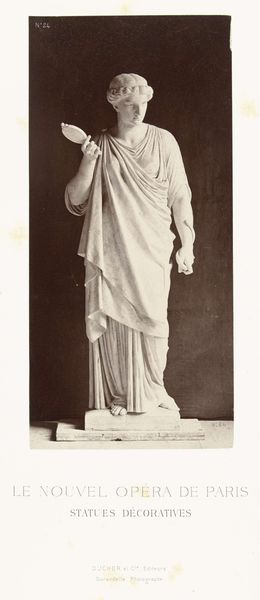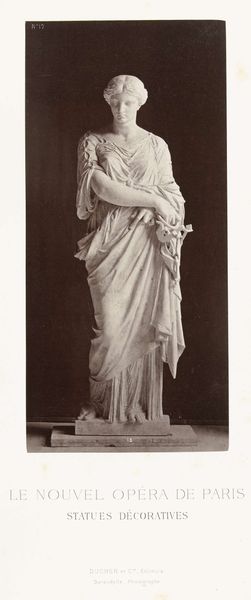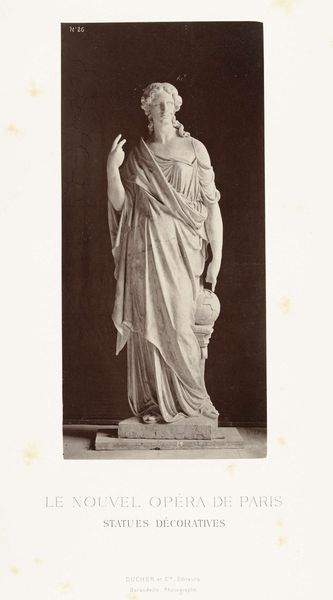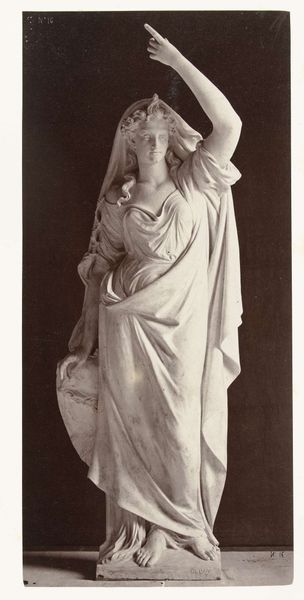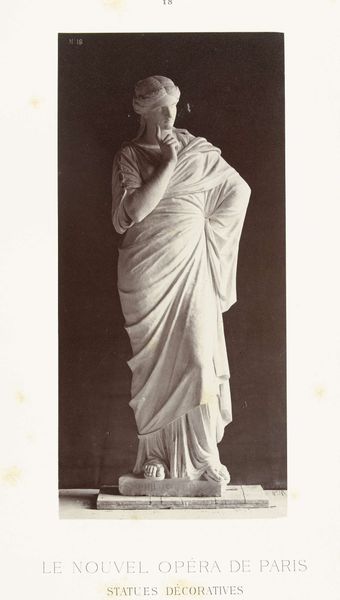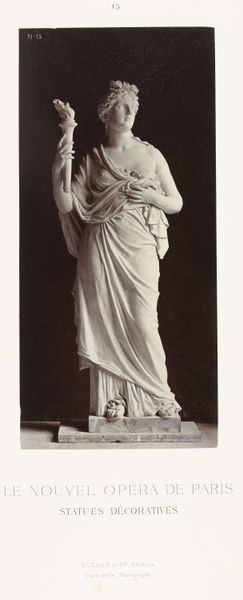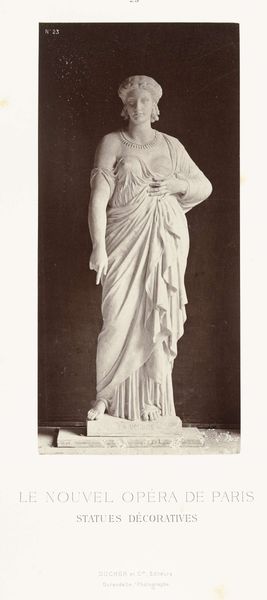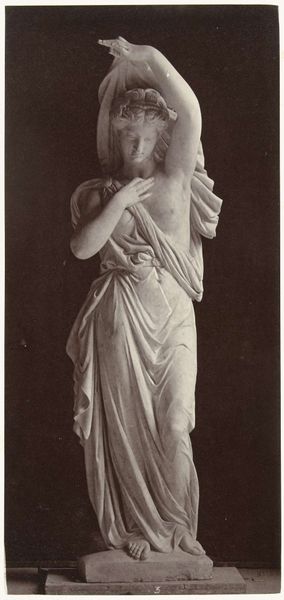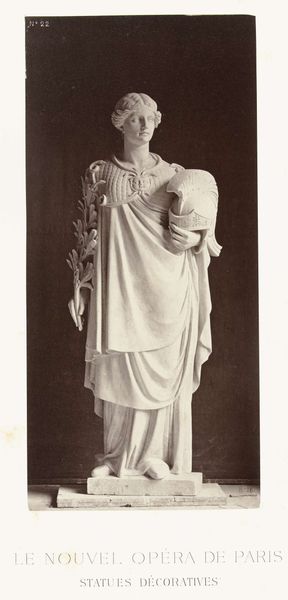
Marmeren beeld van een gesluierde vrouw in een hooggesloten jurk met een staf in haar rechterhand. c. 1878 - 1881
0:00
0:00
Dimensions: height 275 mm, width 128 mm, height 620 mm, width 438 mm
Copyright: Rijks Museum: Open Domain
Editor: This photograph by Louis-Émile Durandelle, taken between 1878 and 1881, captures a marble sculpture of a veiled woman. She has a serious face. What historical narratives might be informing its creation? Curator: I'm struck by the veiled figure and the staff. The veil, traditionally a symbol of modesty or mourning, intersects here with the staff, often representing power or authority. How does this pairing challenge or reinforce the power dynamics often associated with female representation in art? The historical context is crucial. Durandelle documented the construction of the Opéra Garnier, a symbol of the French Third Republic, an era marked by social upheaval and evolving ideas about national identity. Editor: So, it is not just an aesthetic object but is also embedded within a specific socio-political climate? Curator: Exactly. We must consider the woman's gaze. It seems to both acknowledge the viewer and be turned inward, hinting at the internal struggle within her, which complicates any reading of docile femininity. Could this be read as resistance? Consider how Neoclassical art, while often referencing ancient ideals, was also used to legitimize contemporary political structures. What ideological work is this sculpture performing? Editor: I hadn’t thought about the potential resistance implied. I was too caught up in its Neoclassical aesthetic. Curator: It’s easy to get lost in the aesthetic, but art always participates in a wider cultural dialogue. Examining the artist, the subject, and the intended audience through the lens of power helps reveal the sculpture's deeper layers. And who was empowered to commission this and how did the choice reflect their views on class and societal stability? Editor: It gives me a whole new way of viewing and contextualizing this piece and Neoclassical art in general. Thanks! Curator: My pleasure. Always question what appears fixed or natural. The real beauty lies in that act of questioning.
Comments
No comments
Be the first to comment and join the conversation on the ultimate creative platform.


